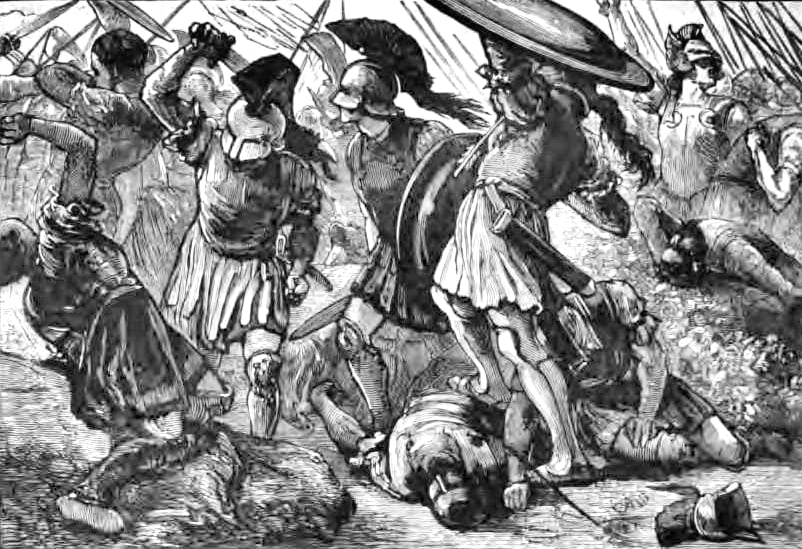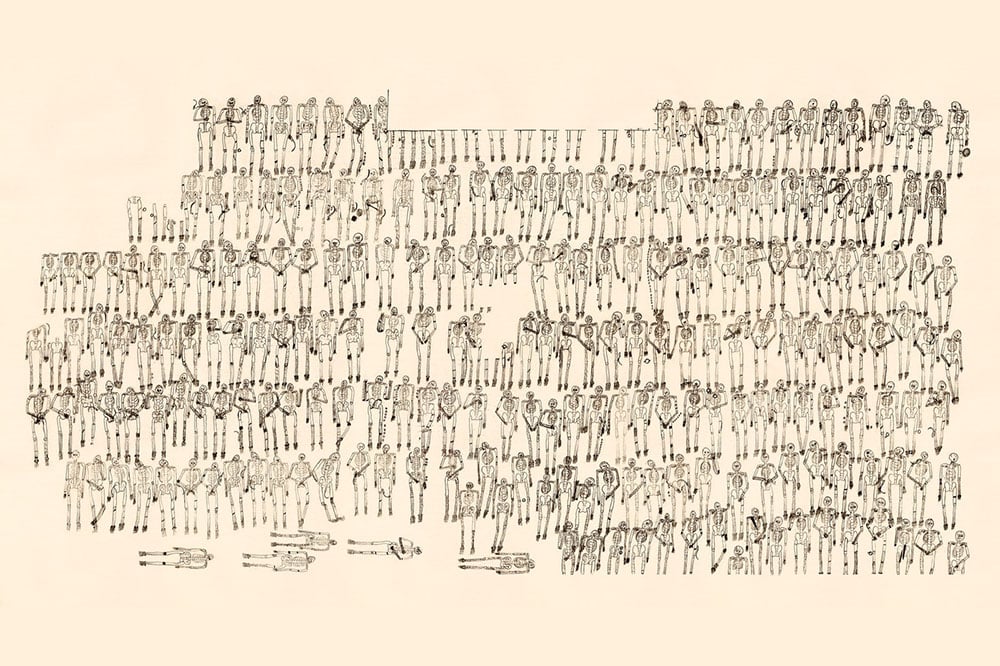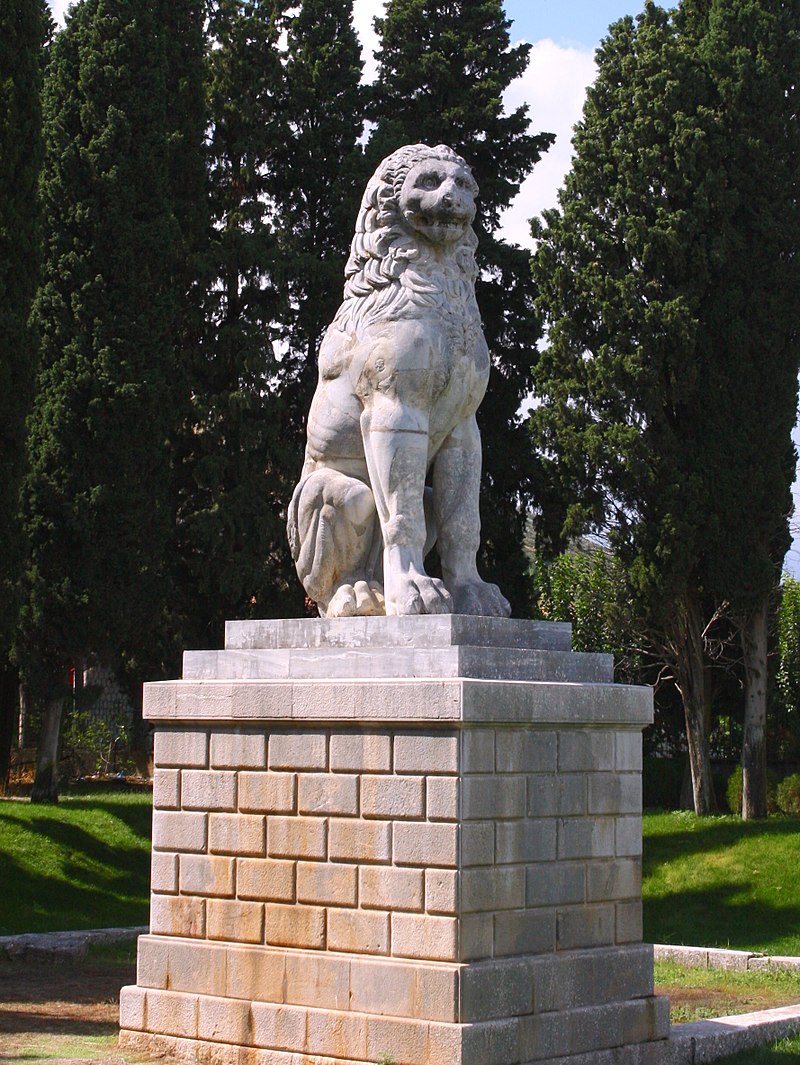
The Battle of Chaeronea believed to have taken place on August 2, 338 BCE confirmed Macedonia’s control over the southern Greek city-states paving the way for Alexander the Great’s legendary conquests.
Philip II of Macedon, and his son, Alexander the Great, with their innovative tactics and superior cavalry, defeated a coalition of Greek city-states led by Athens and Thebes, establishing Macedonian dominance over ancient Greece.
At this time, the Macedonians, under the leadership of Philip II, had expanded their influence and power in the northern Greek region. The southern Greek city-states, particularly Athens and Thebes, viewed Macedon’s rise with suspicion and fear, as they perceived it as a threat to their independence and autonomy.
To counter this growing Macedonian influence, Athens and Thebes formed a coalition and marched against Philip’s forces. The battlefield of Chaeronea, located in Boeotia, was chosen for the confrontation.
Philip and Alexander emerge victorious in the Battle of Chaeronea
The battle was fierce and hard-fought, but ultimately the Macedonian forces, commanded by Philip and Alexander, were able to secure a decisive victory over the Greek coalition.
Philip led a force of about 30,000 infantry and 2,000 cavalry. The combined Greek host numbered about 35,000 men. Philip placed Alexander on the left, opposite the Thebans and their elite Sacred Band. The Macedonian phalanx occupied the center, facing the allied Greek infantry. Philip took positions on the right, across from the Athenians.
The Macedonians’ use of innovative tactics, including the use of the phalanx formation and cavalry charges, played a crucial role in their triumph. These tactics became influential and were later adapted and emulated by other military forces across the ancient world.
There are two dominating interpretations of the events at Chaeronea. The first, firmly established by historian Nicholas G. Hammond in the 1930s and supported by Ian Worthington in the early 21st century, relies on combining the various fragments of ancient texts to provide a complex set of maneuvers used by Philip to secure victory.
In that account, Philip drew the inexperienced Athenian militia out of position with a feigned retreat. As the Athenians sought to exploit their perceived advantage, the troops at the Greek centre moved left in an attempt to preserve the line.
That opened a gap between the Greek centre and the Thebans, and Alexander, at the head of Philip’s hetairoi (“companion”) cavalry, charged through. The Thebans and allied Greeks were taken from the rear, while the Macedonians routed the Athenians.
The second interpretation dismisses many of the later, often anecdotal, ancient texts and instead focuses on the account of Diodorus, which presents a traditional phalanx-on-phalanx battle.
In that description, the veteran Macedonians simply overpowered the Greeks, in part because of the Macedonians’ use of the sarissa, a 13- to 21-foot (4- to 6.5-meter) spear that was roughly twice the length of the pikes used by the Greeks.
In both accounts of the battle, the superior discipline of the Sacred Band resulted in its annihilation. Surrounded and unwilling to surrender, the Sacred Band fought nobly, but they were cut down by the Macedonians.

Archaeological excavations near the city of Chaeronea (now Khairónia) have uncovered a mound containing the ashes of Macedonian troops, clearly built as a monument to Philip’s victory. In addition, 254 skeletons found buried beneath a funerary marker are believed to be the remains of the Sacred Band, buried in pairs.

Battle showcased Alexander the Great’s military prowess
The defeat at Chaeronea had significant consequences for the Greek city-states. It marked the end of their independent efforts to resist Macedonian expansion, and they were subsequently forced to acknowledge Philip’s hegemony over Greece.
The battle also showcased Alexander the Great’s military prowess and leadership abilities, foreshadowing his future conquests and the extent of the Macedonian Empire’s expansion under his rule.
After the victory at Chaeronea, Philip II established the League of Corinth, which brought most of the Greek city-states under Macedonian leadership, creating a united front against the Persian Empire.
The Battle of Chaeronea showcased the military genius of Alexander the Great, who played a prominent role in securing the Macedonian victory. This battle served as a stepping stone for Alexander to later become the ruler of Macedon and undertake his ambitious conquest of the Persian Empire.
The battle and its aftermath marked a turning point in Greek history. The rise of Macedon and the spread of Hellenistic culture under Alexander’s empire had a profound impact on the ancient world, shaping the history, politics, and culture of the regions he conquered.